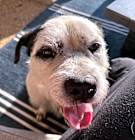Yes, Giant Schnauzers are easy to train given their high levels of intelligence. Alert with a strong work ethic, Giant Schnauzers respond well to structured training sessions that emphasize positive reinforcement. Their intelligence and eagerness to please make them quick learners, especially when commands are consistently reinforced with rewards like treats and praise.
However, don’t be fooled by the “easy to train” label. Training dogs takes time (think months and years, not days) — it isn’t instant, regardless of breed. And like many intelligent breeds, Giant Schnauzers can exhibit a stubborn streak if training lacks clear direction or consistency. Early socialization is crucial to help them develop good manners. Their ease of training will depend ultimately on individual temperament and the consistency of training methods. With patient, firm, and positive training techniques, Giant Schnauzers can become well-behaved companions and excel in activities such as obedience and working roles.










